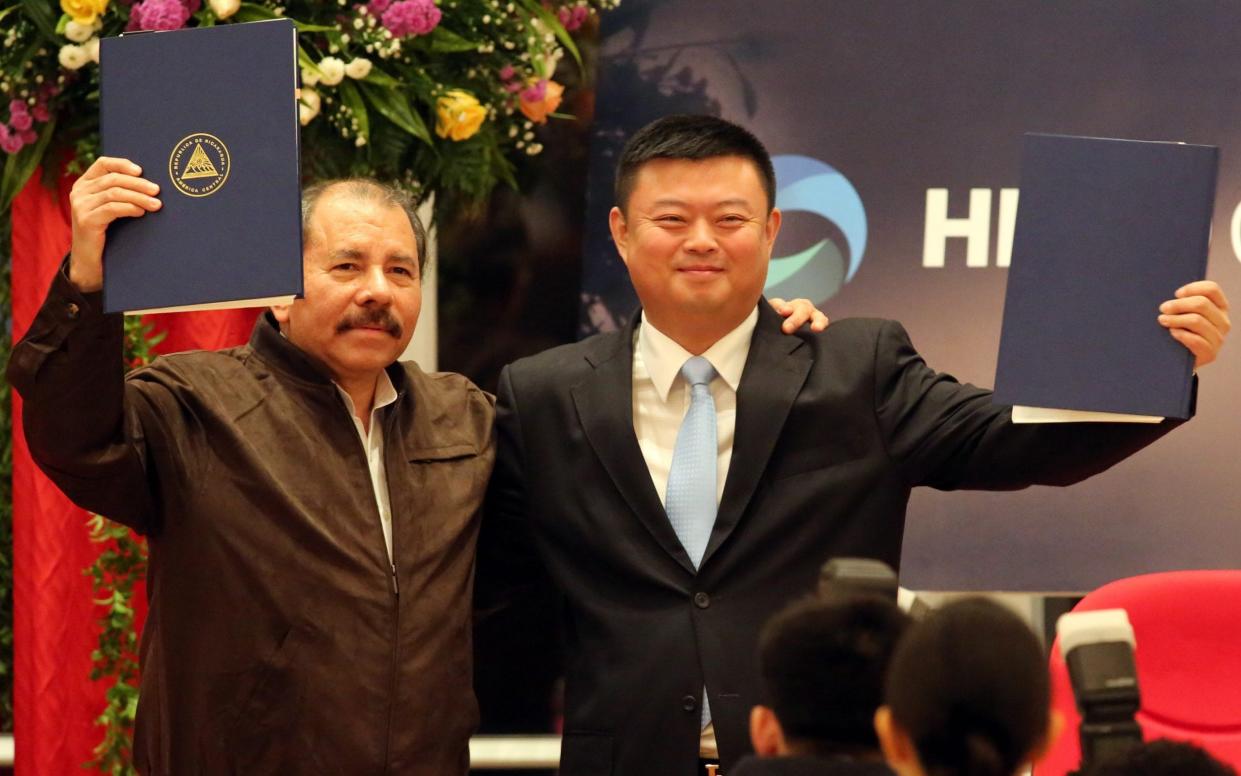China is taking on the US in its own back yard with billion-dollar investment across Latin America

- Oops!Something went wrong.Please try again later.
In Peru, it's a mega-port costing $3billion (£2.17 billion) and investments in the country's huge mining sector. In Argentina, it is an $8 billion nuclear power plant that will power nearly six million homes. In Nicaragua, the plan is for a $50 billion interoceanic shipping channel wider and deeper than the Panama Canal.
Across Latin America, Chinese trade and investments are booming to the point where the Asian powerhouse not just rivals the United States’ economic stake in the region but, in several South American countries, now overshadows it.
In total, state-run Chinese banks have invested nearly $140 billion in Latin American public agencies since 2005. Annual trade between China and the region has risen from $16 billion in 2000 to $400 billion today.
Beijing is also ramping up its military cooperation with Latin America, including sales of armaments, inviting officers to train at elite Chinese academies and even holding joint exercises with Chile and Peru. Argentina is also considering updating its creaking air force with the purchase of Chinese JF-17 fighter jets.
That explains why Anthony Blinken, the US Secretary of State, is this week visiting the region in a bid to promote both economic ties between Washington and its southern neighbors and the democratic values that some fear are under threat from Beijing’s rapidly growing influence in Latin America.
First stop for Mr Blinken was Ecuador, where Guillermo Lasso, the new president and a conservative former banker, is trying to right a listing economy which his socialist predecessor Rafael Correa had left heavily indebted to China after falling out with the International Monetary Fund and Western democracies.
Speaking in Quito on Wednesday, before then flying on to Colombia, Mr Blinken talked up the Biden administration’s strategy, known as Build Back Better World, of using US aid spending to leverage private sector finance to target poverty following the coronavirus pandemic. The belief is that this will also promote democracy.
“Making these kinds of investments helps puncture that myth that authoritarian governments like to tell about themselves: that they are better at delivering for people’s basic needs,” Mr Blinken said.
Nevertheless, it will take more than good intentions to retake the initiative from Beijing. China is now the largest trading partner of many South American nations, including the regional giant Brazil. That has meant Latin America feeding China’s hunger for raw commodities, from soy and beef to steel and lithium, while in return importing vast quantities of manufactured goods, from cell phones to cars.
The burgeoning commercial relationship has been so intense that Latin America has even overhauled its infrastructure to meet Beijing’s needs, including the construction of the Interoceanic Highway, a modern-day Silk Road that runs through the Amazon and over the Andes, connecting Brazil to Peru’s Pacific ports.
Meanwhile, 19 Latin America and Caribbean nations have signed up for Xi Jinping’s flagship Belt and Road Initiative, a $1 trillion-programme of international infrastructure spending, aimed at promoting China’s commercial relationships around the world — and through that its soft power.
But not all of Beijing’s dealings with Latin America have gone smoothly. Venezuela’s descent into crisis jeopardised the repayment of more than $60bn in Chinese loans.
In Peru, investments in the mining sector have been paralysed by communities protesting against alleged pollution. In Ecuador, cracks started appearing in a hydroelectric mega-dam within months of its inauguration, in part thanks to local corruption.
The trend has been the result of Latin American governments, some but not all left wing, seeking to diversify their economic relationships rather than a strategic push by Beijing, says Cynthia Sanborn, a political scientist at Lima’s University of the Pacific.
“If anything, the Chinese have been reluctant to move into Latin America,” she told The Telegraph.
“They share the view that this is an area that is of particular interest to the US and have not wanted to get into a conflict. The US has also been relatively absent in recent years, and the Trump administration was actively hostile.”
Evan Ellis, a researcher at the Center for Strategic & International Studies, a Washington-based think tank, agreed that Beijing is not deliberately seeking to undermine democracy in Latin America, but warned that that was a potential outcome of its forging commercial relationships with authoritarian governments whose problematic records on corruption, rule of law and human rights might make Western investors baulk.
“China wants the oil, the raw materials, not to promote a communist revolution,” Ellis said. “But there is this enormous strategic risk of China, by promoting its own interests in Latin America, facilitating governments that are less amenable to Western values.”

